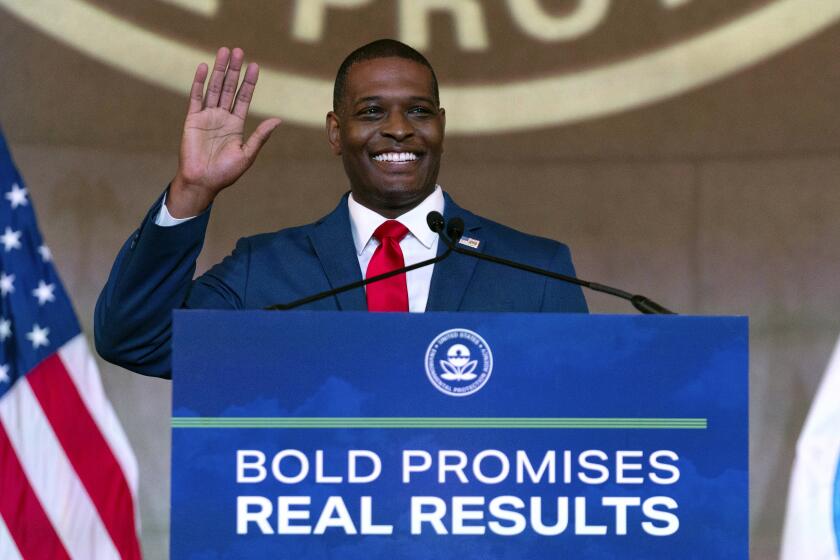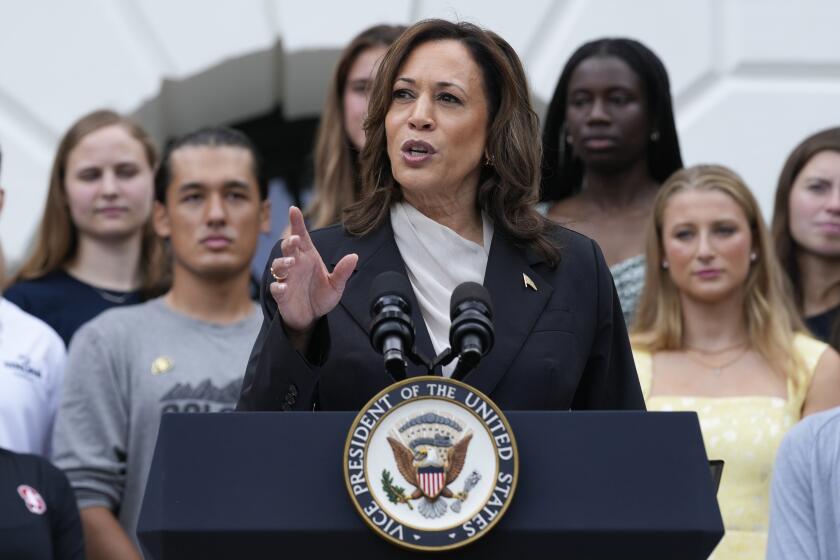Funding Issue Creates Heat for ‘Fire’ : Television: Show advocating development of fusion power is turned down by most public stations because of questions about violating PBS funding guidelines.
When San Diego public-television station KPBS airs “Fire From the Sun” at 10 tonight, it will be one of just 16 stations nationwide to broadcast the documentary about nuclear fusion.
Turned down by PBS and most major stations, including KCET in Los Angeles, “Fire From the Sun” advocates U.S. development of fusion power--and was funded in large part by the U.S. Department of Energy and a host of corporations and utility companies with an interest in nuclear power.
That it is on the air at all is the result of months of lobbying by producer Michael Pack and his wife, Gina Cappo Pack, who have offered it free of charge to public stations through the Southern Educational Communications Authority and Southern Carolina Educational Television Stations, the public-television network that co-sponsored the program.
Programmers who have declined to run the program say it violates PBS funding guidelines. They say viewers would perceive a conflict of interest in Pack’s decision to accept funding from organizations with an interest in fusion, the as-yet unperfected form of nuclear power that supporters say would not be as dangerous as fission, the type of power currently used in nuclear reactors.
“It could definitely be perceived that the funders have an interest in the subject matter,” said Barbara Goen, spokeswoman for KCET. While there is no requirement that public-stations follow PBS guidelines in decisions about underwriting, Goen said, KCET typically follows the network’s lead.
Those who have agreed to air “Fire From the Sun”--including KOCE in Huntington Beach, which aired the program last summer--say there is no conflict because the funders did not exercise any control over Pack’s content.
And Pack insists that he is not the only producer to take money from people and organizations interested in the subject matter of a particular PBS program.
He points to a program on energy conservation funded by Texaco, wildlife shows underwritten by environmental groups and health programs paid for by pharmaceutical companies.
“When (PBS) first said this to me, I said, ‘OK,’ ” said Pack, who produced “Hollywood’s Favorite Heavy” and “America’s Political Parties” for PBS in 1987 and 1988. “I felt very bad about it, but I accepted it. Then I started to find out about these other programs.”
“Fire From the Sun” raises a number of questions about public television and the way it raises money: just what is a conflict of interest? And if “Fire From the Sun” is inappropriate for some public television stations, why is it allowable on others?
The show is a good example of how the struggle between fund raising and programming plays out in today’s public television arena, where government funding is dwindling and money for production comes increasingly from private corporations.
John Lorenz, director of program business affairs for PBS, said that “Fire From the Sun” was a classic case of a program that simply does not meet funding guidelines.
“It came under our heading of ‘perception of editorial control,’ ” Lorenz said. In other words, PBS funding guidelines prohibit a producer from taking money not just from underwriters who want to control the product, but from underwriters who might be perceived as having input in the program.
In “Fire From the Sun,” Lorenz said, Pack not only accepted funding from organizations with a strong interest in his subject matter, but he then interviewed experts from those organizations in the program. An official from the Department of Energy and a scientist from the firm General Atomics are among those who urge Americans to support increased funding for research into fusion on the program.
“We don’t have a rule that says a person from an underwriter cannot appear at all on the program, but to the extent that it happens, it certainly begins to support the idea that these companies do have an interest in the subject matter.”
The rules, as explained in the PBS guidelines, seem fairly straightforward. But the fact is that they are not all applied in the same way.
As funding has become more difficult to obtain, officials at PBS and member stations, which are free to run programs even if PBS rejects them for its national schedule, have begun to allow some flexibility in funding rules for certain classes of programs.
“The perception of editorial control is a standard that is applied principally to public affairs programs,” Lorenz said. How-to shows, or other programs that are not considered to be controversial, including many arts presentations, are not held to such rigid rules.
For example, the Weyerhauser Co., which produces lumber and timber products, is one of the underwriters of “This Old House,” a program about renovating homes. But because the program does not purport to tell consumers what kind of lumber to buy, the association with Weyerhauser is allowed.
The key, public television executives say, is the difference between a company’s or organization’s general affinity with the subject matter of a show and an out-and-out interest in the specific information being given.
But sometimes, that line is somewhat blurred.
Jonathan Olken, senior vice president and director of marketing for public-television station WNET said that when Texaco approached the station about funding a recent documentary on fuel conservation, station officials were not certain that they should accept.
“The appropriateness of the funding became a topic of discussion for a while,” Olken said. But in the end, because WNET was to have complete editorial control over the program, and because it was to deal not with gasoline but with ways consumers could save money on home heating oil, the station said yes.
“We felt that this was an important program and a perfume company was not going to fund it,” Olken said.
According to Sandy Heberer, who handled the funding issue on “Fire From the Sun” for PBS, the decision about Pack’s documentary was much more cut and dried. The program was considered by network executives to be a public-affairs show, and as such was subject to the perception test, period.
Pack says his documentary should be considered noncontroversial, that despite an admitted point of view in favor of the development of fusion technologies, the program is predominantly an educational one. It’s little different, he said, than a wildlife show that might be funded by a conservation organization.
Peggy Cooley, assistant program manager for KPBS, agreed: “There certainly isn’t a lot out there about fusion energy. And (Pack) certainly covered different points of view.”
Still, Cooley said, she, too, was concerned about the funding at first. “I called the distribution network to see if other programs were carrying the show and what they thought of it, and I wanted to get in touch with the producers to ask some questions,” she said.
In his dealings with KCET in particular, Pack may have been hurt by his association with conservative media critic David Horowitz, who last year latched onto “Fire From the Sun” as a “conservative” documentary that Horowitz could champion in his efforts to eradicate what he sees as a left-wing bias on public television.
Horowitz’s relations with KCET turned ugly last fall, when the former leftist claimed credit for encouraging KCET to drop the news magazine “South Africa Now” from its lineup.
“Anyone who is associated with me is essentially persona non grata right now,” Horowitz said in an interview.
But for Pack, who considers himself to be politically mainstream, the issue isn’t Horowitz--whom he met a convention two years ago, never anticipating that he would be swept up into the author’s cause--or politics, or even, having satisfied himself that his underwriters had no influence on the content of his documentary, funding.
“I spent 10 years of my life on this show,” Pack said. “I’d like to see it on the air.”
More to Read
Sign up for Essential California
The most important California stories and recommendations in your inbox every morning.
You may occasionally receive promotional content from the Los Angeles Times.






